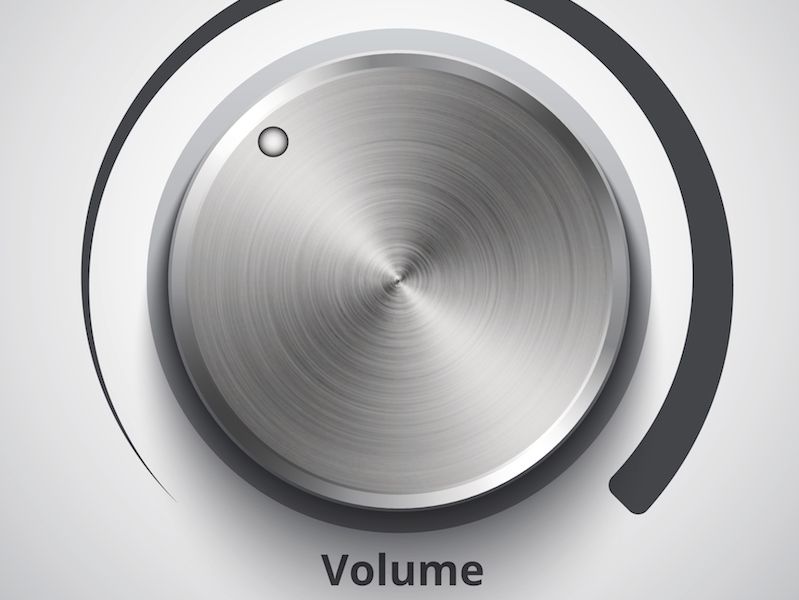
Have you ever seen the “Beware of Sharks” sign when you’re at the ocean? It’s not hard to realize that you shouldn’t ignore a warning like that. You may even reconsider swimming at all with a sign like that (if the warning is written in big red letters that’s especially true). Inexplicably, though, it’s more challenging for people to listen to warnings about their hearing in the same way.
Current research has found that millions of individuals neglect warning signs when it comes to their hearing (these studies exclusively looked at populations in the UK, but there’s little doubt the concern is more global than that). Part of the issue is awareness. Fear of sharks is rather intuitive. But most individuals don’t have an overt fear of loud noises. And the real question is, what’s too loud?
Loud And Dangerous Sound is All Around us
Your ears are not just in peril at a rock concert or construction site (although both of those venues are, indeed, dangerous to your hearing). Many every-day sounds can be harmful. That’s because it’s not just the volume of a sound that is dangerous; it’s also how long you’re exposed. Your hearing can be damaged with even low level sounds like dense city traffic if you experience it for more than two hours at a time.
Generally, here’s a rough outline of when loud becomes too loud:
- 30 dB: This is the volume level you would expect of normal conversation. At this volume, there won’t be a limit to how long you can confidently be exposed.
- 80 – 85 dB: An air conditioner, heavy traffic, and lawn equipment are at this volume. This volume will normally become damaging after two hours of exposure.
- 90 – 95 dB: Think of the noisiness of a motorcycle. 50 minutes is enough to be unsafe at this volume.
- 100 dB: An oncoming subway train or a mid-sized sporting event are at this sound level (of course, this depends on the city). 15 minutes of exposure will be enough to be harmful at this volume.
- 110 dB: Do you ever crank the volume on your earpods up to max? That’s normally around this volume on most smartphones. This amount of exposure will become dangerous after only 5 minutes of exposure.
- 120 dB and over: Anything over 120 dB (think loud rock show or extremely large sporting events) can produce instant damage and pain in your ears.
What Does 85 Decibels Sound Like?
In general, you should consider anything 85 dB or higher as putting your hearing at risk. The issue is that it isn’t always clear just how loud 85 dB is. A shark is a tangible thing but sound isn’t so tangible.
And that’s one reason why hearing warnings frequently go ignored, especially when the sound environment isn’t loud enough to cause pain. There are a couple of possible solutions to this:
- Get an app: There isn’t an app that will immediately safeguard your ears. But there are a number of free apps that can work as sound level monitors. Injury to your ears can happen without you realizing it because it’s tough to know just how loud 85 dB feels. The answer, then, is to have this app open and monitor the sound levels near you. Utilizing this strategy will make it more instinctive to recognize when you are moving into the “danger zone”. (Or, the app will merely let you know when things get too noisy).
- Suitable signage and training: This particularly pertains to workspaces. The real dangers of hearing loss can be reinforced by training and sufficient signage (and the benefits of protecting your hearing). Signage could also inform you just how noisy your workplace is. Training can tell employees when hearing protection is needed or suggested.
When in Doubt: Protect
No app and no signage will ever be flawless. So make the effort to protect your ears if you have any doubt. Noise damage, over a long enough time period, can lead to hearing loss. And these days, it’s never been easier to injure your ears (it’s a simple matter of listening to your music too loudly).
If you’re listening to headphones all day, you should not turn up the volume past the half way. You need noise cancellation headphones if you are continually cranking up the volume to block out background noise.
So when volume becomes too loud, it’s important to recognize it. And to do that, you need to raise your own recognition and knowledge level. It’s not hard to limit your exposure or at least wear hearing protection. But you have to recognize when to do it.
That should be easier these days, too. Particularly now that you know what to look for.
Think you could have hearing loss? Make an appointment.
